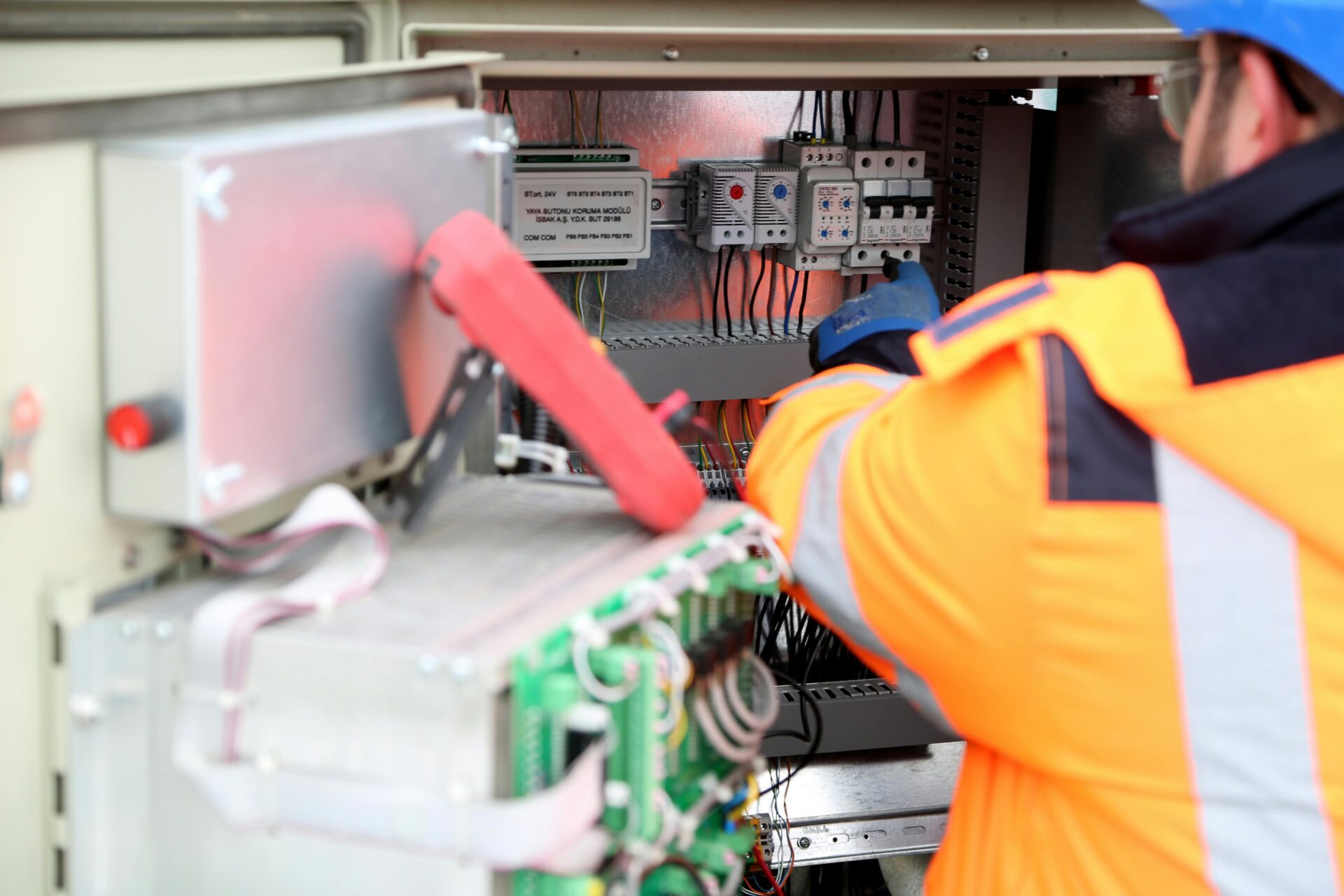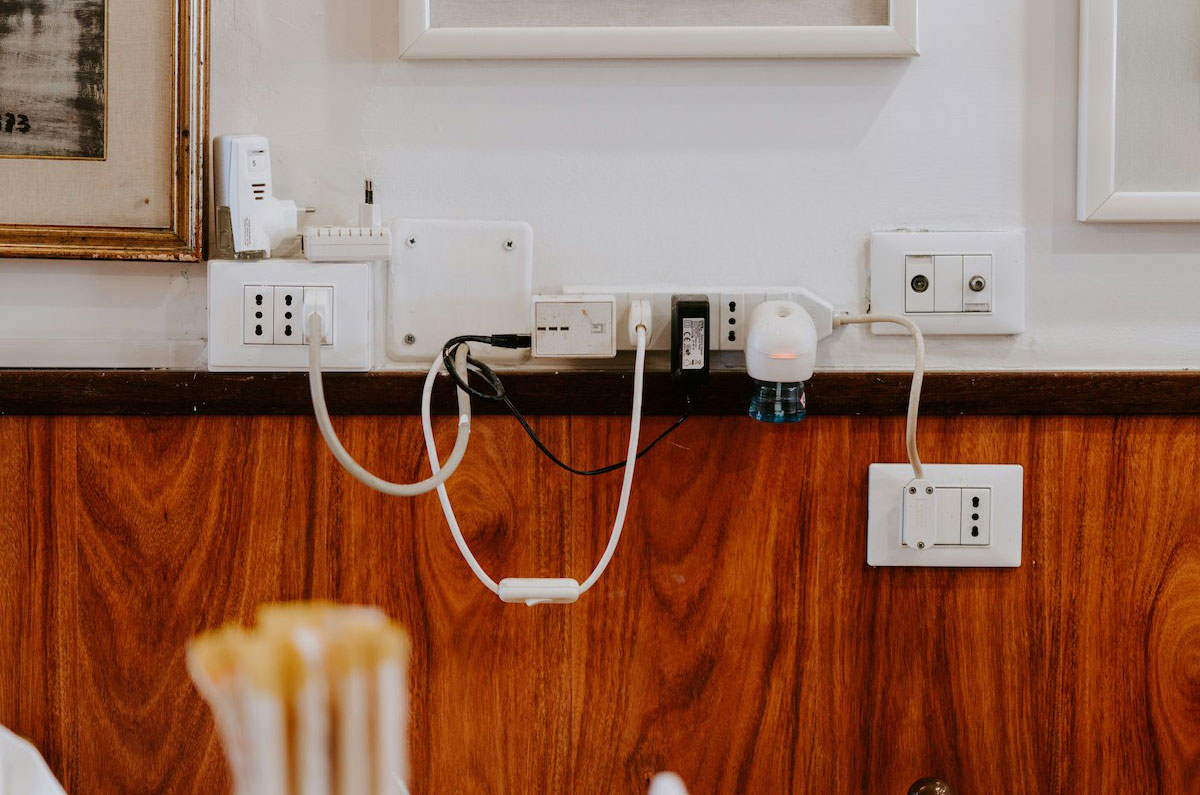*This blog post is for informational purposes only - all electrical upgrades in your home…
Deaths from electrical accidents have steadily declined in Australia since 2000 thanks, in no small part, to safety switches. But what exactly is a safety switch, how do they work and why are they so important in preventing fatalities?
In this article you’ll find out:
- What a safety switch is
- How safety switches keep you safe
- Queensland state regulations on how safety switches are used.
What Is a Safety Switch?
To put it simply, a safety switch is a mechanism that near-instantly switches off your mains power in the event of an electrical fault.
It does this by detecting tiny differences in the currents that run through electrical wiring. These differences are a good sign that electricity is being directed away from its proper path in your electrical wiring and is doing damage to people, pets or property.
A safety switch can kill the power in as little as 300 milliseconds once it detects that something has gone wrong. It could be a short circuit, a faulty appliance or even an exposed wire.
Installed correctly, a safety switch minimises the risk of electrical fires, electric shock and even lethal electrocution.
What’s the Difference Between a Safety Switch, Fuses and Circuit Breakers then?
All of these components are important in a properly installed electrical system and each has a different role.
Circuit breakers and fuses protect against current overloads and short circuits. They can help protect your equipment, appliances, fixtures and outlets but they don’t protect against electric shock to people.
The difference is that when someone comes into direct contact with live electricity, all the power is redirected through their body into the ground. The telltale signal of this grounding travelling back through the wiring is what trips a safety switch.
In other words, they are designed specifically to detect that difference in the current as it’s redirected through a person and shut off the electricity as soon as possible. Less than a split second.
What Causes Safety Switches to Trip?
Safety switches can trip for a number of reasons. Here are a few of the main culprits.
Faulty Appliances
A faulty or damaged appliance can leak excess current and this change in current can cause a safety switch to trip.
It is quite simple to determine whether a certain appliance is the cause of a trip:
- Unplug all your electrical appliances
- Reset your safety switch
- Reconnect your appliances one by one.
- If the safety switch trips again, you’ll know the last thing you plugged back in is faulty.
Nuisance Tripping
Nuisance tripping occurs when you have a number of appliances plugged in at the same time. A small amount of current leaks from each appliance and the cumulative effect can mean your safety switch is always on the verge of tripping. All it takes, then, is a small change in the current and your safety switch is pushed to its limit and off it goes.
Faulty Wiring
We can’t stress this seriously enough: faulty wiring is beyond dangerous. It kills people every year and is the main cause of electrical fires. There are two main causes of faulty wiring:
- Negligence during installation
- Deterioration of electrical wiring over time.
If your house is particularly old and your safety switch is tripping randomly, then faulty wiring may be the culprit. We strongly suggest you call a qualified electrician to safely fix the issue before the worst happens.
Faulty Safety Switch
Even though they are meant to protect you from faults, safety switches can be faulty too. A bad safety is not just one that doesn’t trip, it’s also one that can trip randomly. This is why you should have your safety switches regularly checked by a qualified electrician. It makes sense to ensure these simple yet vital devices are working properly.
Lightning
If lightning strikes power lines, a power station or your home directly, it can cause a power surge. That surge is the kind of electrical signal that causes safety switches to trip. If your switch trips due to a lightning strike, wait until the storm passes before you reset it.
Safety Switches and Queensland Law
The benefits safety switches are so clear that the Queensland government has made several safety switch regulations into law. Here’s a rundown of the legal obligations you might have in regards to safety switches in a domestic premises in Queensland.
New Homes Built or Extended After 1992 but Before 2000
By law, any residence built after 1992 must have a safety switch installed. When a new electrical installation occurs in a house built between 1992 and 2000, switches must also be fitted to all powerpoint circuits.
New Homes Built or Extended After 2000
A change in wiring rules in 2000 saw the safety switch regulations extended to include both powerpoint and lighting circuits.
When Buying a Property
If you’ve recently bought a property and it doesn’t have a safety switch you have three months from the property transfer to bring it up to code.
When Selling a Property
Safety switch installations must be declared on the Form 24 Property Transfer and the standard sales contract. You can sell a property without a safety switch installed, but it’s often common courtesy to have the house up to code before you sell.
When Renting a Property
If you’re renting out a property you own it is your responsibility to have a safety switch installed by a licensed electrician no matter when it was built.
Failure to install a safety switch on a rental property within 6 months of the tenancy agreement can result in up to $1,500 in fines for the property owner.
Safety Switches Simply Save Lives
The laws defining the installation of safety switches are extensive and for good reason. Properly installed, safety switches reduce the risk of electrical hazards, property damage and even save lives.
Need help getting your property up to code? Get in touch today and see how an SJK Collective electrician can help you.



